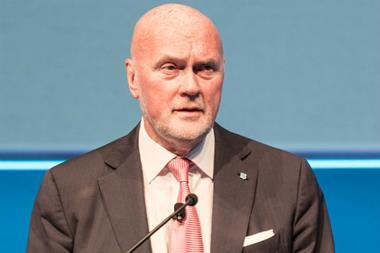>>what solutions to obesity? Giles Quick, managing director, Usage Panels, TNS
Blame for our growing obesity crisis has been levelled in many directions, but a look at the statistics behind the hype can help us find workable solutions to this alarming problem.
The bottom line is that no single factor can be singled out to explain the growth in the level of people in the UK with a body mass index of more than 30.
Over the past three decades the nation has increasingly adopted the cash rich, time poor lifestyle. This has led to a change in the motivation factors of food preparation, as convenience becomes more important and calorific content less so.
In the eighties we took an average of one hour to prepare a meal; in 2004 the time has reduced to just 19 minutes. This is just one indicator of how our lifestyles have changed, mirrored in the growth of convenience food sales. From 1993 to 2003, the cooking sauces market expanded by 142% and the pizzas market by 678%.
But obesity cannot simply be blamed on our changing dietary habits. In fact, according to the government, we consume about 20% fewer calories per day now than we did in 1970.
The added variable, which until now has been underplayed in the debate, is calorie burn. There are numerous lifestyle changes that have resulted in the population exercising less, such as more widespread car ownership, passive pastimes and a reduction in schoolchildren’s physical activity.
When these variables are combined with factors such as the reduction in food education, increased availability of energy-dense food and super-sized portions, it is easy to see how the balance has been lost between calorie intake and output.
Approximately 12 million people are categorised as obese in the UK; of these, about 40% appear to be open to change. More than three-quarters try to manage their weight, although few are motivated by health - convenience is often the key decision maker. Any solution to the £7bn per annum problem needs to be in step with the motivations of the obese. Simple actions that do not entail dramatic changes to their lifestyles are most likely to work.
In this debate the overweight, or obese of tomorrow, barely get a mention, yet evidence suggests they are more responsive to change than the obese.
Globally there are one billion overweight
adults and 300 million who are clinically obese. The overweight population has a very different consumption profile from the obese. They are not primarily motivated by convenience, but consume above average levels of steak, alcohol, coffee and cream.
However, overweight people are highly aware of the health risks related to obesity and will often target fats and sugars in their diet to try to lose weight. When attending the gym they are likely to work out for longer periods of time than other weight groups.
On the basis that prevention is better than cure, then the overweight are a group we could target to prevent them becoming tomorrow’s obese.
We all need to take responsibility for the growing crisis and work together to halt this trend. Food manufacturers, government, the health service, schools and retailers have an important role to play due to their influence on consumers. The major grocery multiples could have a positive impact, for example by promoting bogofs on fresh, healthy produce and reducing the number of such offers on unhealthy food.
Easy-to-understand packaging that clearly indicates whether a product is healthy or low calorie is beneficial since research shows clear low-calorie branding appeals to obese people who are trying to lose weight.
Responsible steps such as these, combined with education about food, exercise and health, awareness of BMI and the use of simple devices such as pedometers, could all help to solve the obesity crisis. The agenda needs to move on from the blame game to positive action.
Blame for our growing obesity crisis has been levelled in many directions, but a look at the statistics behind the hype can help us find workable solutions to this alarming problem.
The bottom line is that no single factor can be singled out to explain the growth in the level of people in the UK with a body mass index of more than 30.
Over the past three decades the nation has increasingly adopted the cash rich, time poor lifestyle. This has led to a change in the motivation factors of food preparation, as convenience becomes more important and calorific content less so.
In the eighties we took an average of one hour to prepare a meal; in 2004 the time has reduced to just 19 minutes. This is just one indicator of how our lifestyles have changed, mirrored in the growth of convenience food sales. From 1993 to 2003, the cooking sauces market expanded by 142% and the pizzas market by 678%.
But obesity cannot simply be blamed on our changing dietary habits. In fact, according to the government, we consume about 20% fewer calories per day now than we did in 1970.
The added variable, which until now has been underplayed in the debate, is calorie burn. There are numerous lifestyle changes that have resulted in the population exercising less, such as more widespread car ownership, passive pastimes and a reduction in schoolchildren’s physical activity.
When these variables are combined with factors such as the reduction in food education, increased availability of energy-dense food and super-sized portions, it is easy to see how the balance has been lost between calorie intake and output.
Approximately 12 million people are categorised as obese in the UK; of these, about 40% appear to be open to change. More than three-quarters try to manage their weight, although few are motivated by health - convenience is often the key decision maker. Any solution to the £7bn per annum problem needs to be in step with the motivations of the obese. Simple actions that do not entail dramatic changes to their lifestyles are most likely to work.
In this debate the overweight, or obese of tomorrow, barely get a mention, yet evidence suggests they are more responsive to change than the obese.
Globally there are one billion overweight
adults and 300 million who are clinically obese. The overweight population has a very different consumption profile from the obese. They are not primarily motivated by convenience, but consume above average levels of steak, alcohol, coffee and cream.
However, overweight people are highly aware of the health risks related to obesity and will often target fats and sugars in their diet to try to lose weight. When attending the gym they are likely to work out for longer periods of time than other weight groups.
On the basis that prevention is better than cure, then the overweight are a group we could target to prevent them becoming tomorrow’s obese.
We all need to take responsibility for the growing crisis and work together to halt this trend. Food manufacturers, government, the health service, schools and retailers have an important role to play due to their influence on consumers. The major grocery multiples could have a positive impact, for example by promoting bogofs on fresh, healthy produce and reducing the number of such offers on unhealthy food.
Easy-to-understand packaging that clearly indicates whether a product is healthy or low calorie is beneficial since research shows clear low-calorie branding appeals to obese people who are trying to lose weight.
Responsible steps such as these, combined with education about food, exercise and health, awareness of BMI and the use of simple devices such as pedometers, could all help to solve the obesity crisis. The agenda needs to move on from the blame game to positive action.


















No comments yet